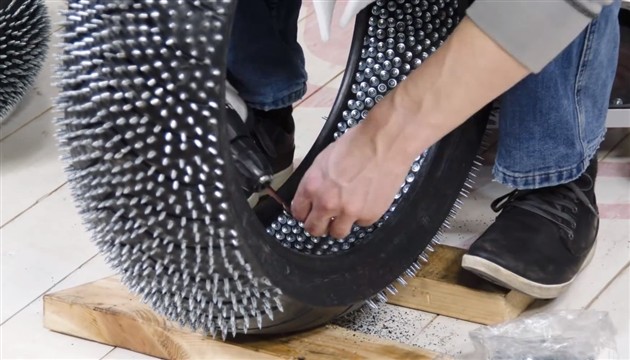If you’ve ever driven through a winter storm, you know it can get a little tense. Especially when roads are covered in snow and ice. You might not be able to avoid winter, but you can be ready for it with a set of winter or snow tires, including studded options. We have some tips to help you make the right choice about studded winter tires, how studs keep you in control, and when they can be used in your state.
Studs are lightweight, small metal spikes (studs) that are staggered and inserted across the tread of a winter tire. These studs protrude slightly from the rubber tread surface, helping break through packed snow and ice-covered roads to give you better traction. Note: Extra tread depth is needed to accommodate studs, so studded tire size options are often limited.
A good set of tires is essential for winter driving, whatever the weather. If you’re heading into snow and ice, studded tires can have a big impact on your safety. A vehicle equipped with winter traction tires can stop faster on ice than a car without those tires — even if you’re driving just 15 miles per hour.
Studded tires work best on snow and ice-covered roads that have yet to be fully plowed. As the studs pierce the ice and snow, they provide extra traction to keep you safe and in control.
Snow tires, and especially studded winter tires, are specifically designed to help you stay on the road in snow zones or mountain regions where the temperature regularly drops below 40 degrees. Snow tires are distinguished by a mountain snowflake symbol on the sidewall of the tire. This indicator means the tires have been tested and proven for snow, ice, and slush.
The benefits of snow tires include improved traction, vehicle handling, and skid control thanks to deeper, wider, and more jagged tread than regular tires. This tread allows the tire to pick up snow and maintain traction. The studs on some of those tires give them added grip on snow and ice.
This tread allows the tire to pick up snow and maintain traction. The studs on some of those tires give them added grip on snow and ice.
Studded tires are not always the best option for safe winter driving. Studded tires provide optimal traction on ice or packed snow. But studless winter tires work well on slush and packed snow thanks to wide, deep grooves in the tread and lots of irregular surfaces with sharp edges. These allow the rubber to cut through the snow and grip the road.
As temperatures steadily rise, it’s time to replace your winter tires with all-season or performance tires. We recommend swapping back when you do not plan to drive on snow or ice-covered roads, or when nighttime temperatures are consistently 50º F. As temperatures rise, the special rubber compound found in winter tires can wear out much faster.
Les Schwab Tip: If your winter tires have studs, your state has specific dates those tires must be removed from your vehicle.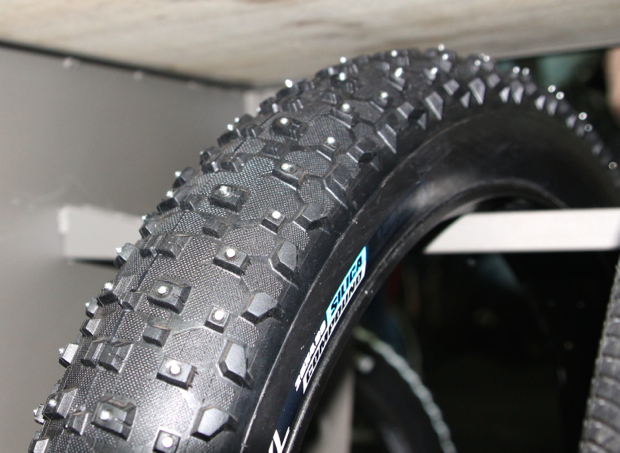 Find your state’s information here.
Find your state’s information here.
Les Schwab can help you choose the right winter tires for where you drive, including a good knowledge of local state laws.
Winter tires are designed to provide extra traction and control on snow and ice. The differences between studded and studless winter tires go beyond tiny metal studs.
Studless snow tires offer great traction for most winter conditions without the metal spikes. Wide, deep grooves in the tread help keep you in control.
Studded tires have spikes or studs that break through packed snow and ice for added traction.
If you do choose a set of studded winter tires for your vehicle, remember there are state-by-state laws regulating when and where you can use them. U.S. states that do allow studded snow tires permit their use from mid-winter to early spring. Driving outside specified dates can carry a steep fine along with plenty of disapproving looks from your fellow drivers.
Driving outside specified dates can carry a steep fine along with plenty of disapproving looks from your fellow drivers.
Studded tire use is regulated by each state. Driving with studded tires on clear roads not only wears down your studs, it can also decrease stopping distance. That’s because your tread is not making optimal contact with the road — your studs are.
For legal stud dates in your region, check out this state-by-state list of studded tire regulations as reported by the U.S. Tire Manufacturers Association.
The price for a set of studded winter tires depends on the size of tire you need for your vehicle, the features of those tires, the warranty, as well as other options. The experts at Les Schwab can help you choose the right winter tires for your car or truck.
Depending on where you drive and the winter conditions you face, studded winter tires could add safety to outings in tough winter conditions.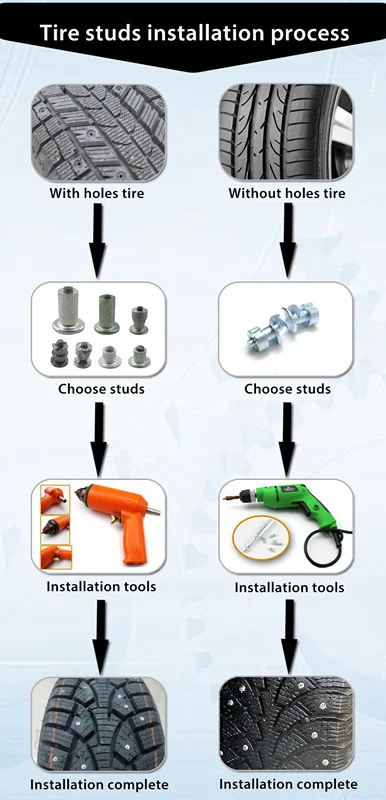 Studded or regular winter tires could be a good choice if you’re a winter sport enthusiast, often navigate unmaintained winter roads, or if you plan to drive in the snow and ice every week. The pros at Les Schwab can help you face winter with the right tires.
Studded or regular winter tires could be a good choice if you’re a winter sport enthusiast, often navigate unmaintained winter roads, or if you plan to drive in the snow and ice every week. The pros at Les Schwab can help you face winter with the right tires.
The right set of winter tires can be found at your local Les Schwab. Stop by today or schedule an appointment and we’ll help you decide on the best winter traction to keep you in control and safely on the road.
Outside's long reads email newsletter features our strongest writing, most ambitious reporting, and award-winning storytelling about the outdoors. Sign up today.
Nowhere does consumer perception lag further behind on-the-ground reality than in the car world. And that’s a problem, because your outdated beliefs, loyalties, and superstitions are probably costing you money and compromising your safety.
We discussed just that last year, when I told you that running winter tires matters way more than buying an all-wheel drive car. But that article had one major flaw: I neglected to explain why studded tires are so vastly inferior to the modern studless alternative. And readers have since indicated that they are actually running studded tires in conditions that don’t merit them. This is my attempt to fix that.
Studs Only Grip IceIf you don’t read any further, the fact that studs only provide additional grip on clear ice is probably the most important takeaway I can give you. Studs themselves are small, sharp metal protrusions installed into the tread of a tire. Because they get between the rubber and whatever surface you’re driving across, they need to be able to poke into that surface and momentarily stick there, resisting lateral forces, in order to provide grip.
Picture other winter surfaces: in packed, loose, or deep snow, the studs will definitely penetrate, but they won’t find the resistance necessary to actually add grip.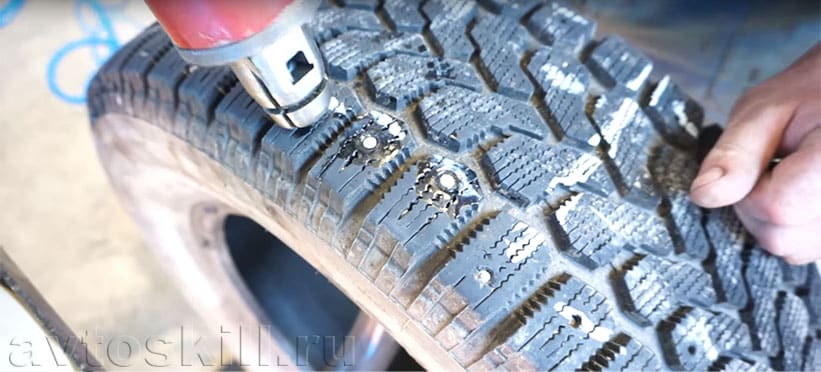 In slushy or wet conditions or on bare pavement, the tire needs to come into contact with the road surface in order to find traction—and the metal studs actually get in the way of that.
In slushy or wet conditions or on bare pavement, the tire needs to come into contact with the road surface in order to find traction—and the metal studs actually get in the way of that.
So studs help on bare ice only, do nothing for you in snow, and actually make you less safe in other conditions.
For last year's article on all-wheel-drive versus better tires, I interviewed Woody Rogers, the head of Tire Rack’s testing team. Because Tire Rack is the largest online tire retailer, Rogers tests virtually all makes and models of tires and his job is to be as objective as possible. Tire Rack doesn’t care about selling you a specific tire; they care about selling you the best tire for your needs. “Drivers can’t dictate the surfaces they drive on,” he told me. “They just need a tire that works across all the hazardous conditions they face in winter months.” And that’s not studs.
And Even on Ice, Studs Only Work at Certain TemperaturesBack in 2001, Washington State conducted an exhaustive study into the performance of studded tires. One of its most interesting conclusions was that, while studs do grip clear ice very well, they only do so under a very specific set of circumstances.”Studs are most effective on ice at or near 32 degrees F and lose their efficacy as temperatures drop and the ice becomes too hard for the studs to grip or when temperatures rise and ice melts to slush or wet pavement,” the study reads. The minimum effective temperature for studs? Zero degrees Fahrenheit, according to the study.
One of its most interesting conclusions was that, while studs do grip clear ice very well, they only do so under a very specific set of circumstances.”Studs are most effective on ice at or near 32 degrees F and lose their efficacy as temperatures drop and the ice becomes too hard for the studs to grip or when temperatures rise and ice melts to slush or wet pavement,” the study reads. The minimum effective temperature for studs? Zero degrees Fahrenheit, according to the study.
And that’s a huge problem, because bare ice in those temperature ranges where studs help only exists on roadways for a very small amount of time. In Washington, the study found that conditions where studs work only exist one percent of the time. In Alaska, those conditions occurred just six percent of the time during winter months. In Connecticut, that number is just half a percent. In Ontario, bare ice between zero and 32 degrees accounts for less than two percent of vehicle miles traveled.
Go back to Rogers’s quote above, and you’ll see why having a tire that only works as advertised in such specific, rare circumstances will be problematic. I called him back up for help with this article. “There is absolutely a time and place where a studded tire is a superior solution,” he tells me. “But I don’t know a place in the U.S. where conditions merit studs all winter. So, you have to consider managing the tradeoffs.”
I called him back up for help with this article. “There is absolutely a time and place where a studded tire is a superior solution,” he tells me. “But I don’t know a place in the U.S. where conditions merit studs all winter. So, you have to consider managing the tradeoffs.”
Tiny metal spikes don’t grip pavement as well as soft, pliable rubber. So, by getting between the rubber and the road, studs actually reduce grip, and therefor safety, in slushy, wet, or dry conditions.
A study conducted in Alaska in 1994, soon after the advent of modern studless winter tires, compared the braking, acceleration, and cornering performance of studded, studless winter, and all-season tires across packed snow, clear ice, and bare pavement. Studded tires demonstrated some advantage in braking and acceleration on bare ice, were actually out-cornered by studless winter tires, and were demonstrated to reduce grip in all tests on bare pavement. Consider the small fraction of the time in which conditions merit studs and you can see that you are sacrificing grip—and, again, safety—throughout most of the winter.
Studded tires demonstrated some advantage in braking and acceleration on bare ice, were actually out-cornered by studless winter tires, and were demonstrated to reduce grip in all tests on bare pavement. Consider the small fraction of the time in which conditions merit studs and you can see that you are sacrificing grip—and, again, safety—throughout most of the winter.
“There is absolutely a time and place where a studded tire is a superior solution. But I don’t know a place in the U.S. where conditions merit studs all winter. You have to consider the tradeoffs.”
And that's assuming your studs are in good condition. “Think about how much of your driving here in the U.S. is spent on non-snowpack roads,” says Rogers. “And that is wearing at the studs, blunting the sharpness of them, and wearing them down. That takes away some of the traction advantage.”
How much grip is lost as studs wear? “When stud protrusion diminishes to 0.024 in. (0.6 mm), the frictional effect from the studs becomes negligible,” concludes the Washington study.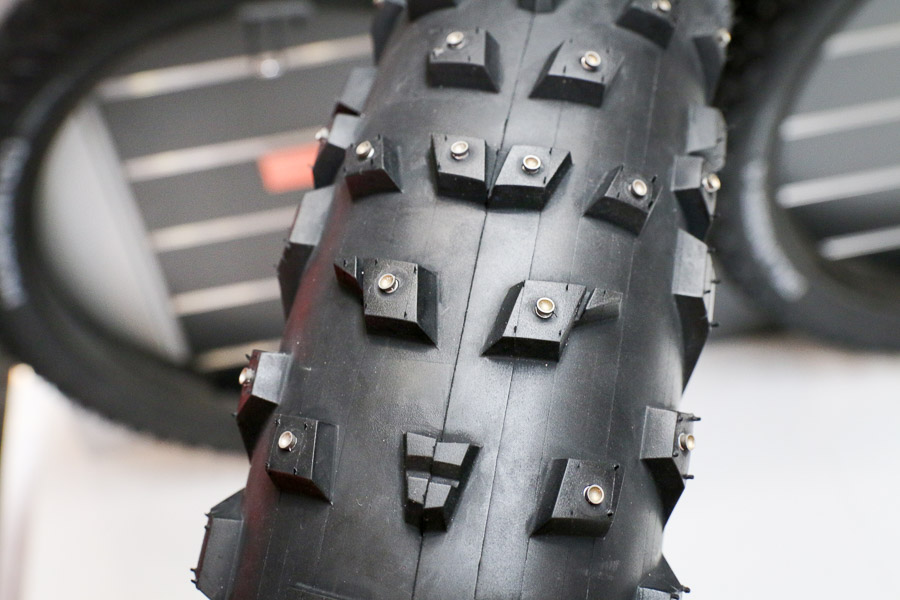 It found that after just 1,000 miles of driving on bare pavement, the braking distance of studded tires increased by 12 percent.
It found that after just 1,000 miles of driving on bare pavement, the braking distance of studded tires increased by 12 percent.
Studs aren’t the only things that wear when they’re driven on bare pavement. The road surface itself is also torn to pieces. By damaging pavement so significantly, studs actually create a significant amount of pollution, throwing microscopic asphalt and concrete particles into the air. In Japan, concerns about this type of pollution led to the development of moderns studless winter tires in the early 1990s. Studs are now banned in that (very snowy) country.
“And then there’s the noise,” says Rogers. “The noise is crazy. I still remember the first time we drove on studded tires as part of a test here, I was in a caravan with other cars, and we had a studded car and a studless car. I was an eighth of a mile behind the studded car, and even with the windows up, I could here the noise from the tires of the car ahead of me.”
All that for a small advantage in one specific circumstance that only accounts for a tiny fraction of the miles you’ll log during the winter?
Stopping distances on bare ice, at different temperatures. (Washington State Transportation Center)Studs Aren’t Great to Drive On
(Washington State Transportation Center)Studs Aren’t Great to Drive OnBack in the 2000s, when it was my job to test new cars, I once crashed a Corvette into a bank of frozen snow way up in northern Sweden. Why? Well, because I’m an idiot, obviously. But part of the reason was also due to the unique handling characteristics of studded tires, which I failed to fully account for.
“With a studded tire, what we’ve found particularly during braking and acceleration, is that once the tire spins, the studs cut a groove in the ice,” says Rogers. “Then the next stud that comes along behind it comes right through that same groove and has nothing to grab onto.” It only takes about a quarter of a revolution for that effect to take place, and once it occurs, grip disappears instantly.
“That leads to what you felt in the Corvette,” Rogers tells me. “Grip, grip, grip, grip, grip, then whoops—who pulled the rug out?”
Even if you’re not lapping a car around a race track carved onto a frozen lake, this lack of communication from studded tires could impair your ability to drive safely in winter conditions. Whereas studless tires lose their grip progressively, communicating to the driver that they’re nearing the limits of available grip, studded tires lose grip suddenly, without warning. You won’t know you’re driving too fast for the conditions until you end up in a ditch.
Whereas studless tires lose their grip progressively, communicating to the driver that they’re nearing the limits of available grip, studded tires lose grip suddenly, without warning. You won’t know you’re driving too fast for the conditions until you end up in a ditch.
The simple answer is that studs are an outdated technology that's no longer relevant in the vast majority of driving conditions.
“The traction of studded tires is slightly superior to studless tires only under an ever-narrowing set of circumstances,” the Washington study concluded—way back in 2001. “With…the advent of the new studless tire, such as the Blizzak, since the early 1990s, the traction benefit for studded tires is primarily evident on clear ice near the freezing mark, a condition whose occurrence is limited. For the majority of test results reviewed for snow, and for ice at lower temperatures, studded tires performed as well as or worse than the Blizzak tire. For those conditions in which studded tires provided better traction than studless tires, the increment usually was small.”
For those conditions in which studded tires provided better traction than studless tires, the increment usually was small.”
This winter, will you drive in extreme cold? Will you drive on snow? Will you encounter bare, plowed highways? Winter driving is defined by its unpredictability. Fortunately for all of us, there is a device designed to deal with all of it: The modern studless winter tire.
16 August 2014
Sooner or later, every motorist faces the important question of choosing winter tires, and whether it is necessary to buy studded tires.
Brief definition
Studded tires are tires designed for use in difficult winter conditions, which have special anti-skid metal spikes in the tread body. The presence of a spike in the tire is designed to provide better grip on dense snow or ice, reducing the braking distance of the car, i.e. studded tires are indispensable for frequent trips out of town on snowy or icy roads, where the presence of studs will significantly increase the car's handling, and, therefore, provide greater safety, which is so important on winter roads. nine0003
nine0003
There are also tires prepared for studding, in which case you yourself, if you wish, choose the studs and install them at any service center with special equipment, or order studding of new rubber from us. Of course, this operation must be carried out before the start of operation of the tires, while the “nests” for the spikes are clean and not clogged.
Pin shape:
By housing type:
Aluminum-bodied studs can quickly fail due to exposure to salt and chemicals that are sprinkled on the tracks in winter. Plastic does not tolerate severe frosts and a large number of bumps on the road, so steel models are the most reliable.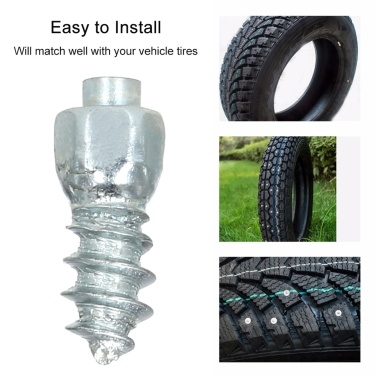 They are susceptible to corrosion, but, as practice has shown, they last longer than others. nine0003
They are susceptible to corrosion, but, as practice has shown, they last longer than others. nine0003
By number of flanges:
The more flanges, the correspondingly stronger the fit of the stud, which means that the likelihood of the stud falling out is reduced.
The positive aspects are obvious and easy to highlight. Grip with icy road surfaces and packed snow is much higher, which can significantly reduce the braking distance of the car in harsh winter conditions. This "plus" can justify a number of "cons", because safety on the road is the primary factor in choosing winter tires. nine0003

In general, studded tires require more attention and careful operation. New tires with studs should be run in for a distance of about 500 km at speeds up to 80 km/h, while avoiding sudden starts and braking. In the future, it is necessary to constantly monitor the tire pressure in order to prevent driving on low tires, as this may lead to the studs falling out. nine0003
The choice of one or another type of winter tires primarily depends on the preferences of the car owner and operating conditions. If the car is mainly operated in urban mode, where the roads are cleared and treated with reagents, and the climatic conditions do not portend serious snowfalls, then it makes sense to use non-studded winter tires. This will greatly increase the comfort of winter driving.
Important: if you chose studded tires, remember that they must be installed in a complete set on 4 wheels. If there are only a pair of wheels with spikes, then the car's handling during braking, turning or accelerating significantly worsens and the likelihood of skidding increases due to the difference in grip between different axles of the car. nine0003
Back
Disputes about which tires to choose flare up with renewed vigor every year. Many argue that studded tires are the choice of amateurs and emergency workers. However, the AvtoVzglyad portal is ready to argue with this. Moreover: in some cases, "spike" is the only right choice for operation both in the city and beyond. nine0003
Viktor Vasiliev
The material posted on the AvtoVzglyad portal about the shortcomings of studded tires received a strong response. Spikes, they say, do more harm than help. Is it really? Let's figure it out.
Spikes, they say, do more harm than help. Is it really? Let's figure it out.
This is one of the main advantages of studded tires. On loose or compressed snow, spikes go better than Velcro. The point here is not the presence of the spikes themselves, but the tread pattern. For spikes, it is directional in the vast majority of models, while for Velcro it is asymmetric. There are many deep grooves in the directional pattern (and they are noticeably deeper than those of friction tires), through which the snow-water porridge is removed from the contact patch like a pump. Thus, the car on the "thorns" behaves more confidently on a snowy road. nine0003
Do not forget that not only the tread works on the tire, but also the rubber compound. The compound of non-studded tires is made softer so that they cling better to snow and ice. They don't have spikes. And the softer the rubber, the faster it wears out. Therefore, with the same operation, "studs" will live longer.
Photo: Driving Art
There is an opinion that spikes on asphalt prevent the tread from adhering tightly to the surface. Thus, the car becomes less stable. This is not entirely true. The thing is, technology never stands still. Many companies have solutions that allow the studs to keep and make the car's behavior more stable, especially when braking. Let's say Nokian has a spike that is "planted" on the so-called "cushion". On the pavement, this “pillow” seems to be springy and the spike slightly presses into the tire. Thus, the load on it is reduced, and the tread firmly adheres to the surface. Well, on ice, the hardness of which is lower than that of asphalt, the spike works as it should - it "bites" into the ice. nine0003
Among other solutions, we note Dunlop SP Winter ICE 03 rubber. The studs of these tires have a beveled carbide core. It also reduces the load on the spike on the pavement, because it is more difficult to “tear out” such spikes.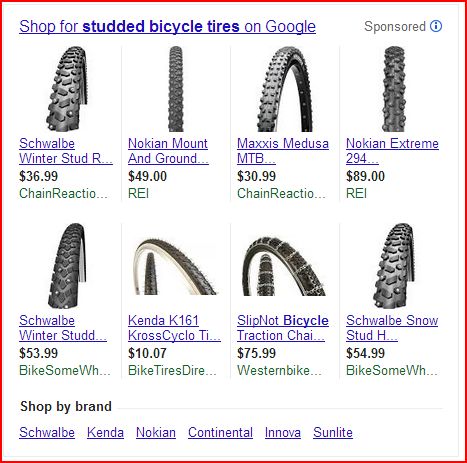
In my deep conviction, this is complete nonsense. A tire from which all the spikes have flown out is absolutely safe. She will have worse braking on ice, but on dry pavement the grip will increase. Let's not forget that the tread and rubber compound continue to work, which means that such a tire will, as before, be stable on a snowy road. And on wet pavement, it will work just fine. The tread pattern with deep grooves and a large number of sipes provide excellent traction. nine0003
121682
Even if the tire has lost all the studs, the tread and rubber compound continue to work. Say, after a rain it froze, and a thin ice crust formed on the road. She's almost invisible. This is where the spikes will save you, while on Velcro you can fly into a ditch even at 40 km / h.
Let's not forget that in winter the condition of roads in different cities is strikingly different. Take, for example, Omsk. The peculiarity of the local roads in the so-called "ice cones".